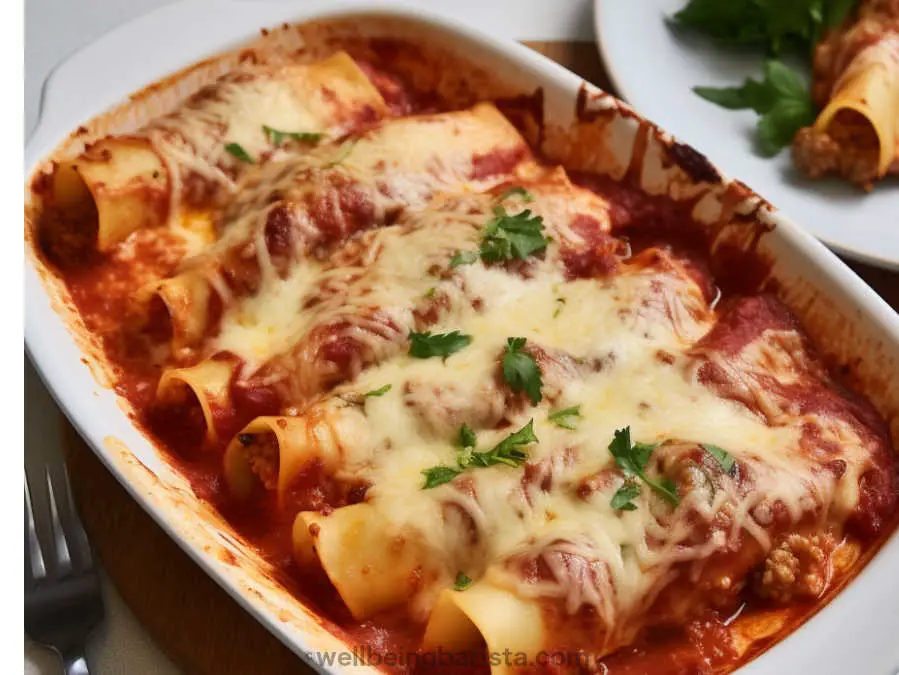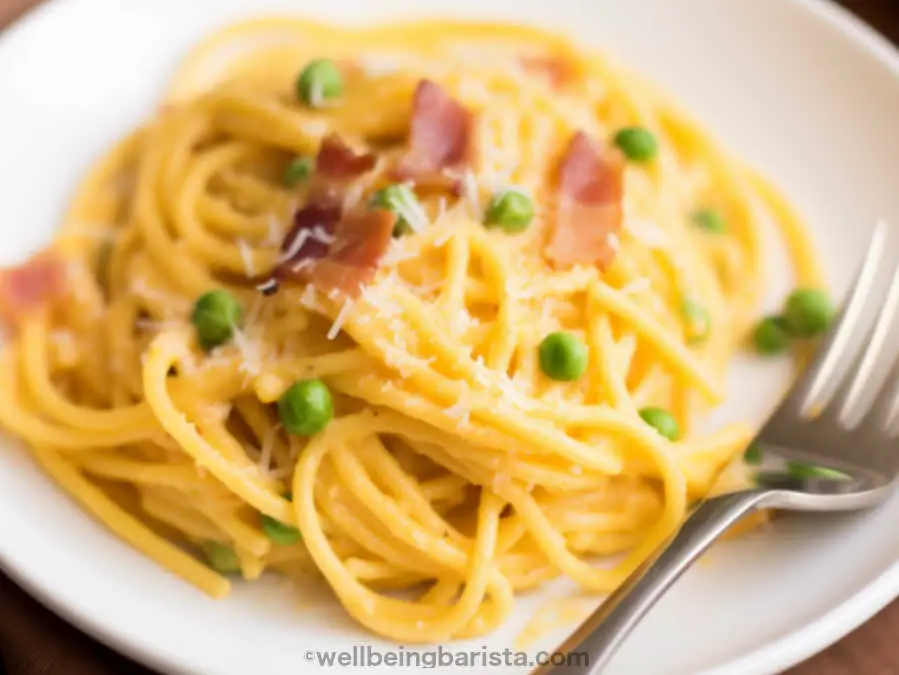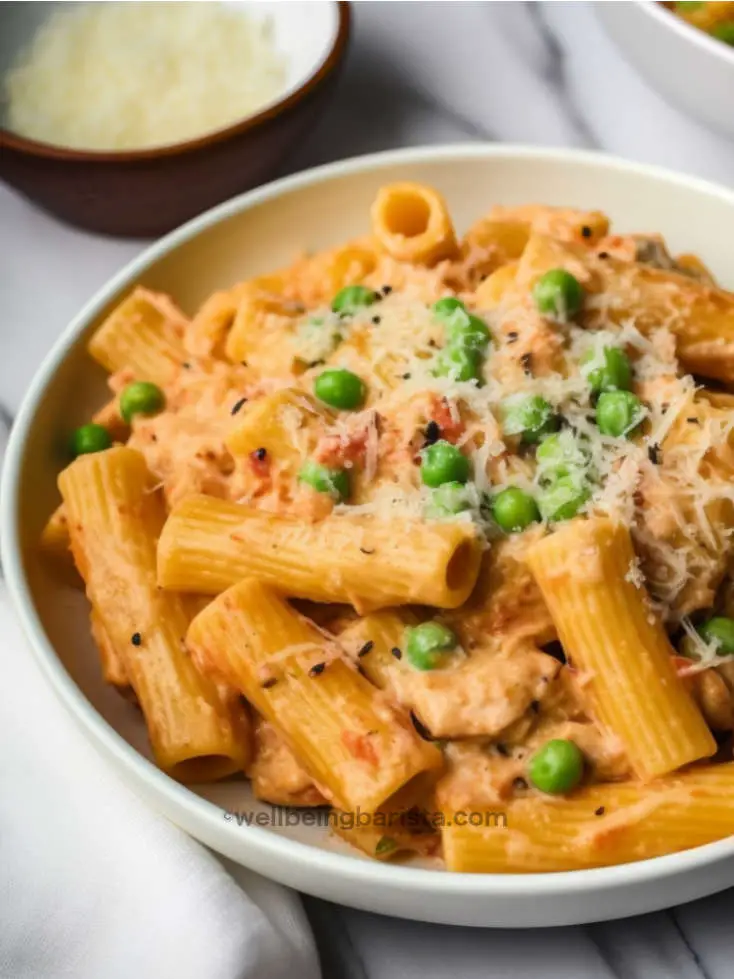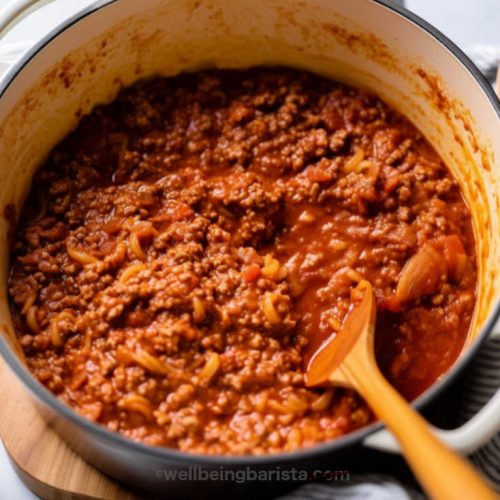Authentic Ragù Bolognese (Pappardelle Alla Bolognese)
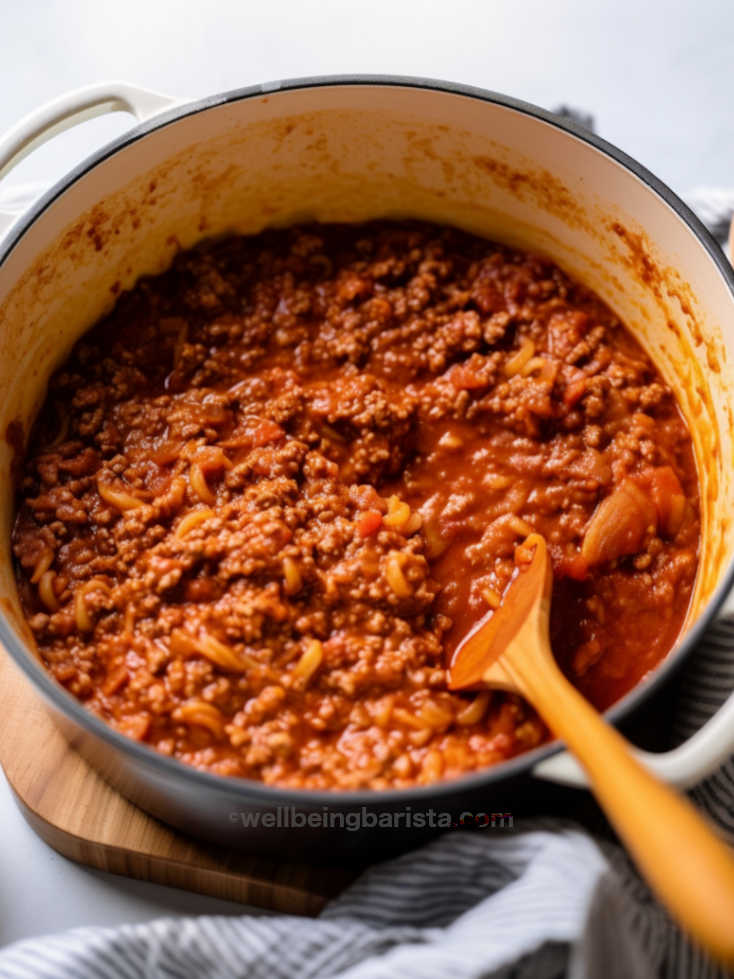
Why You’ll Like It
Drawing from my experiences living in various parts of central Italy, particularly near Bologna, I’ve had the privilege of savoring countless authentic ragù Bolognese sauces. Each sugo Bolognese bears the unique touch of its creator, resulting in a diverse spectrum of flavors and aromas. Here’s why this dish is so special:
- Authenticity: The Pappardelle alla Bolognese is a quintessential Italian classic, renowned for its exquisite taste and adherence to tradition. Preparing it according to age-old methods ensures a luscious, rich, and heavenly sauce.
- It’s More Than Just Tomato Sauce: Unlike the common belief, an authentic Ragù Bolognese is a meat sauce with a hint of tomato, not simply tomato sauce with meat.
- The Secret Ingredient: While ratios and the kind of meat may vary, the important if not fundamental ingredient is patience, given that the intense flavor is directly proportional to the cooking time. Cooking ragù is equivalent to saying “I’m not in a hurry”. Seeing (and tasting) is believing.
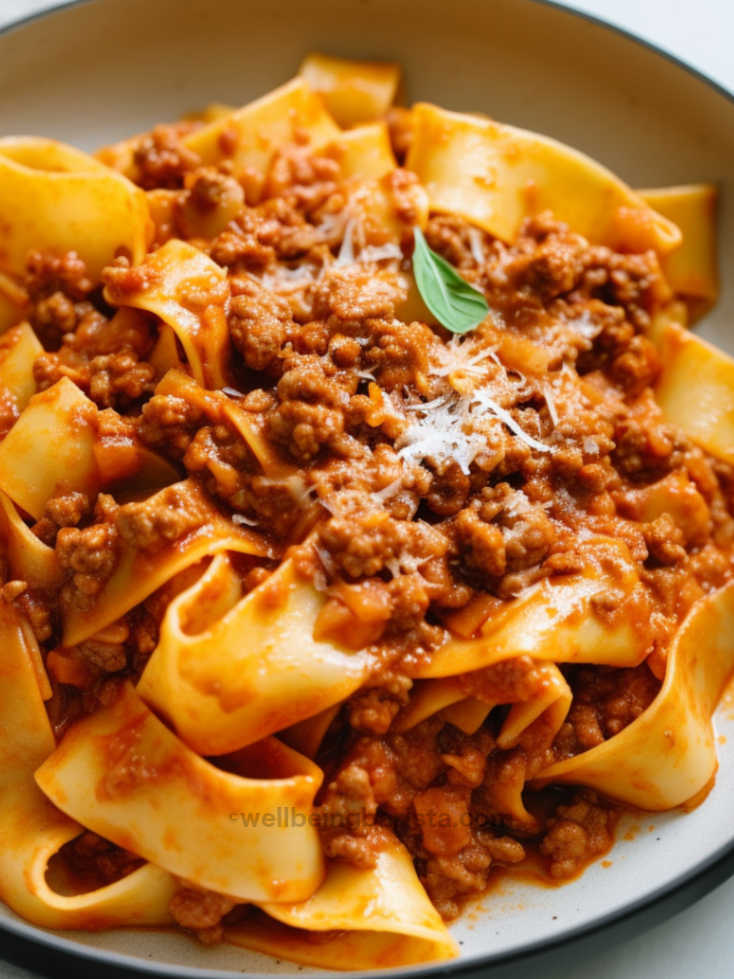
Tips to Make the Best Pappardelle alla Bolognese
To avoid making mistakes, just keep in mind some good – or rather, necessary – diktats for any version:
- The soffritto: The minced onion, carrot, and celery which are the core of the sauce are known as soffritto. It’s crucial to hand-mince these vegetables for optimal results. Though you can add the vegetables altogether to save time, I find that cooking each of them in sequence yields better results.
- The cut of the meat: Tradition dictates that the beef fillet should be used for an authentic Bolognese sauce. Alternatively, you can try cheaper cuts like the beef belly, the shoulder, the arm clod or the chuck tender. Other cuts are not considered. You may also ask your butcher to ground the meat twice for added flavor complexity. In my Authentic Ragù Bolognese, I use a generous amount of pancetta combined with only ground beef. However, I don’t mind varying from time to time and adding more ground pork to the mix.
-
The duration of cooking: cooking ragù is equivalent to saying “I’m not in a hurry“. For the best Authentic Ragù Bolognese, patience is key. After the initial sautéing, allow at least an hour and a half, up to four hours, for the flavors to fully develop. Seeing is believing.
-
The pasta to use: until the early twentieth century, Emilian ragù was often generically accompanied by macaroni. If spaghetti reigns supreme abroad, in Bologna but generally in Italy the most common pairing is with egg pasta tagliatelle or pappardelle, purely fresh. Alternatively, with a touch of bechamel, the ragù is perfect for baked lasagna or, mainly in winter, for polenta. Here too, other variants are not welcomed.
-
The wine: I love San Giovese wine, whether from Tuscany or Emilia Romagna. Its early rich and subtly spicy notes add a delightful dimension to the sauce.
- The broth: Trust me when I say that making homemade broth ensures authenticity and elevates the overall quality of your sauce to new levels.
- The tomatoes: And we mustn’t overlook the importance of tomatoes. Many renowned brands simply don’t cut it. Using top-quality peeled tomatoes and robustness is paramount. Choose wisely, and your sauce will express its gratitude with every savory bite.
Variations for Authentic Ragù Bolognese
While staying true to traditional recipes, you can substitute some ingredients or adjust cooking techniques to accommodate dietary preferences and restrictions.
How to Serve Your Authentic Ragù Bolognese
One of the most traditional ways to serve Ragù Bolognese is with fresh egg pappardelle, tagliatelle, or layered in lasagna as is customary in Bologna. Ragù Bolognese pairs impeccably with various pasta shapes, offering a comforting and flavorful dining experience.
For a balanced meal centered around ragù Bolognese, consider a one-course option. You can boost the nutritional value by substituting pasta with zoodles (zucchini noodles) for a lower-carb alternative.
Description
Equipment
- Kitchen knife
- Pot or Dutch oven (min 20 cm diameter)
- Wooden spoon or spatula:
- Grater (optional):
- Large pot (for cooking pasta)
- Colander or pasta strainer
- Serving dish
Ingredients
For the classic ragù Bolognese
- 3 tablespoons olive oil extra virgin
- 50 g butter (1¾ oz) unsalted
- 65-75 g yellow onion (2½ oz) finely minced
- 50 g carrots (1¾ oz) peeled and very finely minced
- 42.5 g celery (1½ oz) very finely minced
- 150 g pancetta (or mix of pancetta and ground pork) (5½ oz) minced
- 350 g ground beef (12½ oz)
- Freshly ground nutmeg to taste (optional)
- 200 ml red wine (⅘ cup)
- 300 grams Italian peeled tomatoes (10⅓ oz)
- 500 ml Italian meat broth or vegetable broth (2 cups)
- 1 tablespoon tomato paste
- Salt to taste
- Freshly ground black pepper as needed
- 2 tablespoons milk
For the Pappardelle alla Bolognese
- 500 g Egg pappardelle (17.6) oz
Instructions
Authentic Ragù Bolognese
- After cleaning the vegetables, finely chop the onion, carrot, and celery as fine as possible with a kitchen knife for the “soffritto” and set aside.
- In a pot or Dutch oven (at least 20 cm in diameter), heat a drizzle of olive oil and melt the butter over medium heat for a few minutes.
- Once the butter has melted, cook the onion slowly with a pinch of salt, stirring frequently until it becomes soft and translucent. This might take from 5-10 minutes.
- Next, add the celery and the carrot together with another pinch of salt stirring often for around 5 minutes.
- Once the vegetables are caramelized (between 10 and 15 minutes), add the finely chopped pancetta (or ground pork mix) stirring the mixture to break it apart. Increase the heat to medium-low to facilitate the cooking of the pancetta and the release of its fat. Cook the “soffritto” and pancetta together, allowing their flavors to meld without browning for another 10 to 15 minutes.
- With the vegetables and bacon cooked, now it is time to add the ground beef to the pan. Spread the pancetta and vegetables around the edges of the pot, creating space in the center for the meat. Increase the heat to medium-high and add one-third of the meat with salt. Stir continuously to fully break up the meat and prevent it from releasing excess liquid. Once the meat begins to change color, move it to the sides and add another third with salt. Repeat this process until all the meat is browned and fully cooked and there are no big chunks left.
- Season with salt and pepper and cook, stirring for a few minutes. Optionally add a generous grating of freshly ground nutmeg to add warmth and depth to the ragù Bolognese.
- Deglaze with half of the red wine leaving it to evaporate slowly. Keep the heat on high for a couple of minutes, stirring again until the wine alcohol evaporates. Then repeat with the remaining wine. This step requires a little patience and may take up to 25 minutes but it’s important not to leave any traces of wine before pouring the tomatoes.
- Stir in the hand-crushed tomatoes and let it simmer, covered, for 30 minutes. In the meantime, warm the broth and tomato paste in another pan, mixing them together until fully dissolved. Set aside until the 30 minutes have passed.
- Once ready, pour the hot broth and tomato paste mixture into the pot. Bring it to a gentle simmer, reduce the heat to low, and cover the pot, leaving the lid slightly ajar. Let it simmer gently for at least 3 hours, stirring occasionally, or longer if needed for a deeper flavour
- Cook for about 3 and a half hours, stirring occasionally and checking the consistency of the ragù (add salt, pepper, or more water if needed). Always keep the lid on, please! About 30 minutes before turning off the heat, you can add the milk to give the ragù more creaminess and reduce the acidity of the tomatoes.
- Finally season with salt and pepper. If you’re using the sauce of lasagne then you might need to cook it for longer until it becomes denser.
Pappardelle alla Bolognese
- Bring a large pot of salted water to a rolling boil. The water should be generously salted, similar to seawater.
- Carefully add the pappardelle to the boiling water. Use a gentle stirring motion to prevent the pasta from sticking together. Allow the pasta to cook, stirring occasionally, according to the package instructions or until it reaches the desired level of doneness. Fresh pasta like pappardelle all’uovo typically cooks much faster than dried pasta, usually within 3-5 minutes.
- Taste the pasta to check for doneness. It should be al dente, meaning it’s tender but still has a slight firmness to it. Once the pasta is cooked to your liking, drain it in a colander or pasta strainer.
- Transfer the cooked pappardelle to a serving dish or directly into the ragù Bolognese sauce. Toss the pasta with the sauce until evenly coated
- Serve hot, garnished with freshly grated Parmesan cheese if desired.
How to Serve Your Authentic Ragù Bolognese
One of the most traditional ways to serve Ragù Bolognese is with fresh egg pappardelle, tagliatelle, or layered in lasagna as is customary in Bologna. Ragù Bolognese pairs impeccably with various pasta shapes, offering a comforting and flavorful dining experience.
For a balanced meal centered around ragù Bolognese, consider a one-course option. You can boost the nutritional value by substituting pasta with zoodles (zucchini noodles) for a lower-carb alternative.
FAQs
You Might Like More
